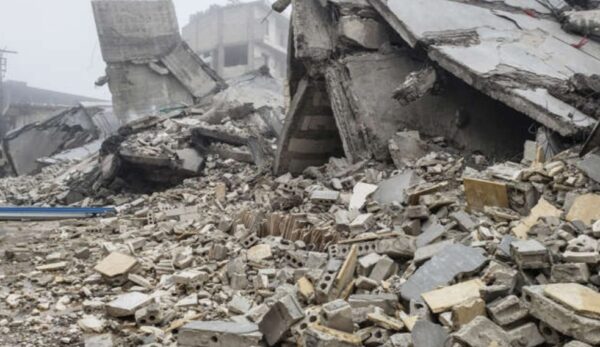
Earthquakes are some of the most powerful natural disasters, often changing the landscape of entire regions in a matter of seconds.
Over the years, there have been several catastrophic earthquakes that not only caused massive loss of life but also reshaped how we approach disaster management and preparedness.
Let’s take a look at five of the most devastating earthquakes in history.
1. The 1556 Shaanxi Earthquake (China)
The 1556 Shaanxi earthquake holds the title as the deadliest earthquake ever recorded, with an estimated death toll of around 830,000 people. Striking China’s Shaanxi province, the quake caused massive destruction, particularly in the Loess Plateau, where many people lived in homes carved into soft rock. These cave dwellings collapsed under the quake’s force, burying thousands. The devastation spread across a large region, and the destruction was so severe that it became a defining moment in Chinese history.
2. The 2004 Indian Ocean Earthquake and Tsunami
On December 26, 2004, a powerful earthquake with a magnitude of 9.1-9.3 struck off the coast of Indonesia, triggering one of the deadliest tsunamis in history. The resulting waves swept through coastal areas in Thailand, Sri Lanka, India, and Indonesia, as well as reaching as far as East Africa. Entire communities were swept away, and the disaster claimed the lives of around 230,000 to 280,000 people. The international response was overwhelming, with countries around the world sending aid, but the scale of the destruction was immense and far-reaching.
3. The 1906 San Francisco Earthquake (USA)
The 1906 San Francisco earthquake was a pivotal event in the history of the United States. Measuring a magnitude of 7.8, the earthquake struck early in the morning, shaking the city and causing widespread destruction. Fires erupted after the quake, devastating much of San Francisco, with over 80% of the city destroyed. About 3,000 people lost their lives, but the incident also led to significant advancements in earthquake engineering and building codes to better withstand such disasters.
4. The 2010 Haiti Earthquake
In January 2010, Haiti experienced a catastrophic earthquake with a magnitude of 7.0, which hit close to the capital, Port-au-Prince. The earthquake caused buildings, roads, and vital infrastructure to collapse, leaving millions of people homeless. With a death toll of approximately 230,000 and countless others injured, Haiti’s already fragile economy and infrastructure were left in ruins. The global community responded with massive humanitarian aid, but the recovery process has been long and challenging, with the country still facing difficulties in rebuilding.
5. The 1960 Valdivia Earthquake (Chile)
The Valdivia earthquake, occurring in Chile in 1960, is the largest earthquake ever recorded, with a magnitude of 9.5. It struck southern Chile, releasing an enormous amount of seismic energy that caused widespread destruction. The earthquake triggered a series of devastating tsunamis that affected coastal regions across the Pacific, including Hawaii, Japan, and the Philippines. While the death toll was lower than some other major earthquakes, ranging from 1,000 to 6,000 people, the event left a lasting impact, particularly due to the damage to infrastructure and the global response to the aftermath.
Conclusion
These five earthquakes serve as reminders of the immense power of the natural world. They brought suffering, but also led to advancements in disaster preparedness, building resilience, and international cooperation. By learning from the past, we can better understand how to mitigate the impacts of future earthquakes and reduce the potential for devastation.
